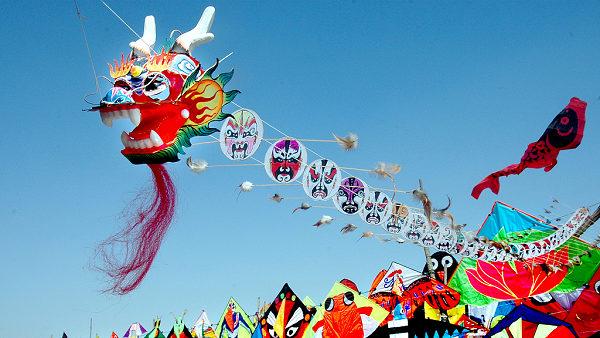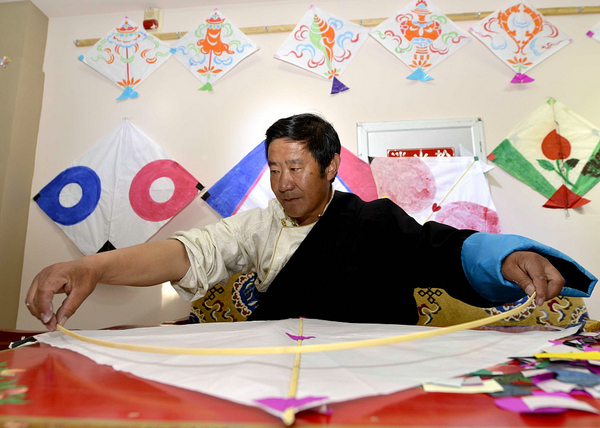

Unlike the wide variety of forms seen in Weifang, Nantong kites are mostly rectangular. However, there are some deviations in their design, extending to hexagonal, pentagonal and even octagonal shapes. Each of these relates to the traditional Chinese concept of "heaven, earth, and humans living in harmony" as well as the theory of the five elements (fire, water, wood, gold, and earth) in feng shui. For example, hexagons are associated with "water" whereas octagons belong to the "wood" element.
Yet the most distinctive feature of Nantong kites is the attachment of whistles of different sizes, which can range in number from 100 to 300. As such, they have picked up the moniker "air symphonies."
Lhasa kites have gained popularity in various regions of Tibet such as Lhasa, Shigatse, and Zedang, and have even spread to neighboring countries like Nepal and Bhutan. During the Qing Dynasty (1644-1911), they were especially favored by upper-class Tibetans

The skill of kite-flying in Lhasa is demonstrated through aerial competitions. Skilled practitioners can make their kites rise and fall rapidly, spin, and roll left or right, depending on the pressure they apply on the kite line. In such competitions, battles often ensue, with the winner cutting the string of the loser mid-flight, causing it to drift off into the ether.
Lhasa kites are seasonal and are mostly made for sale in cities like Lhasa and Shigatse during autumn.